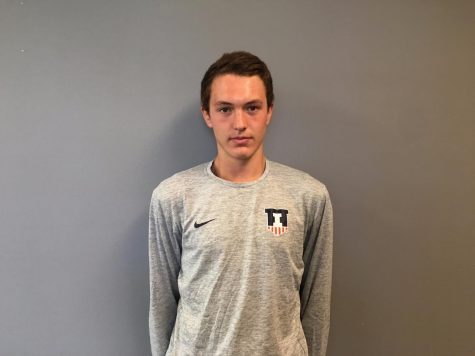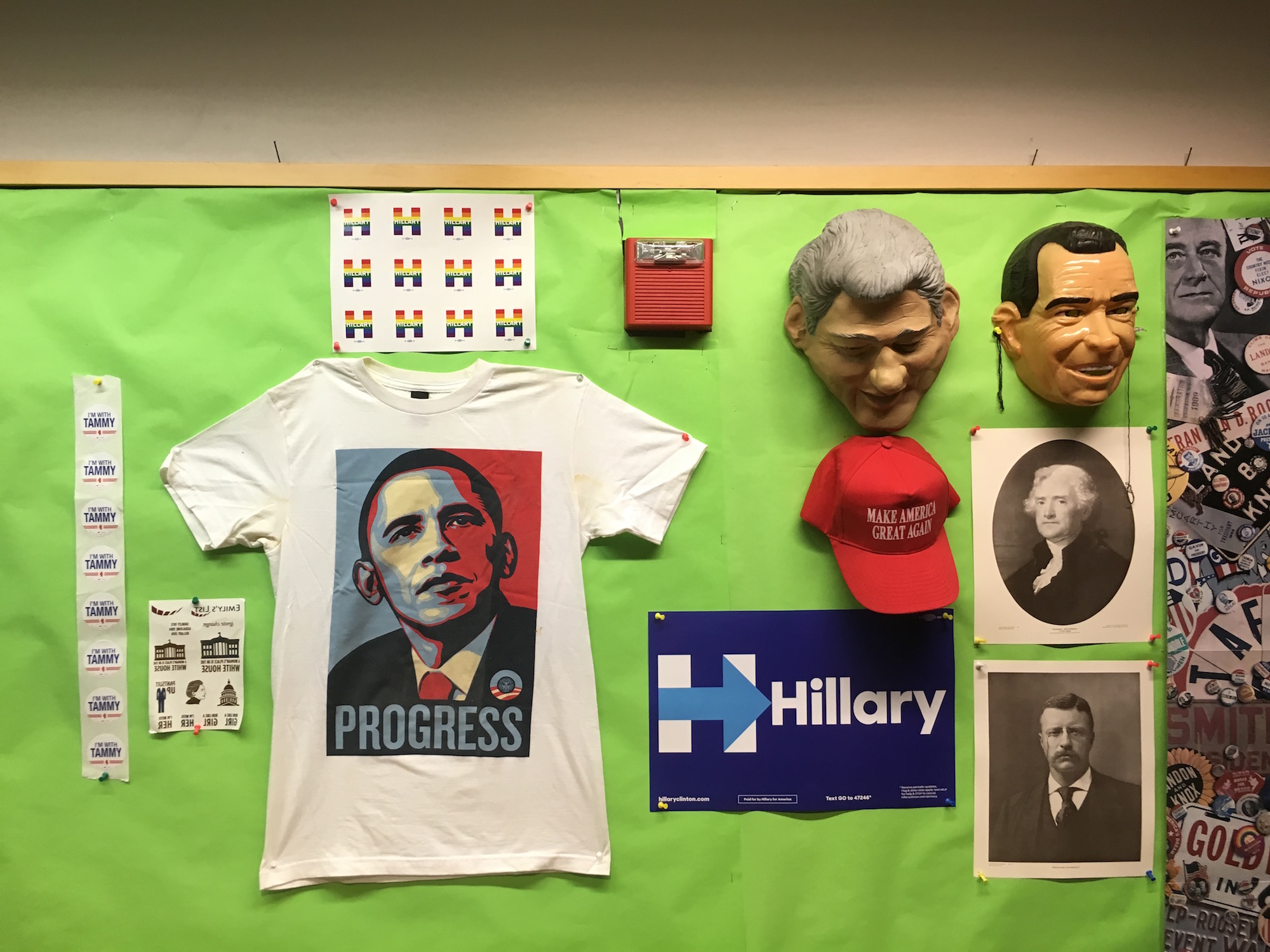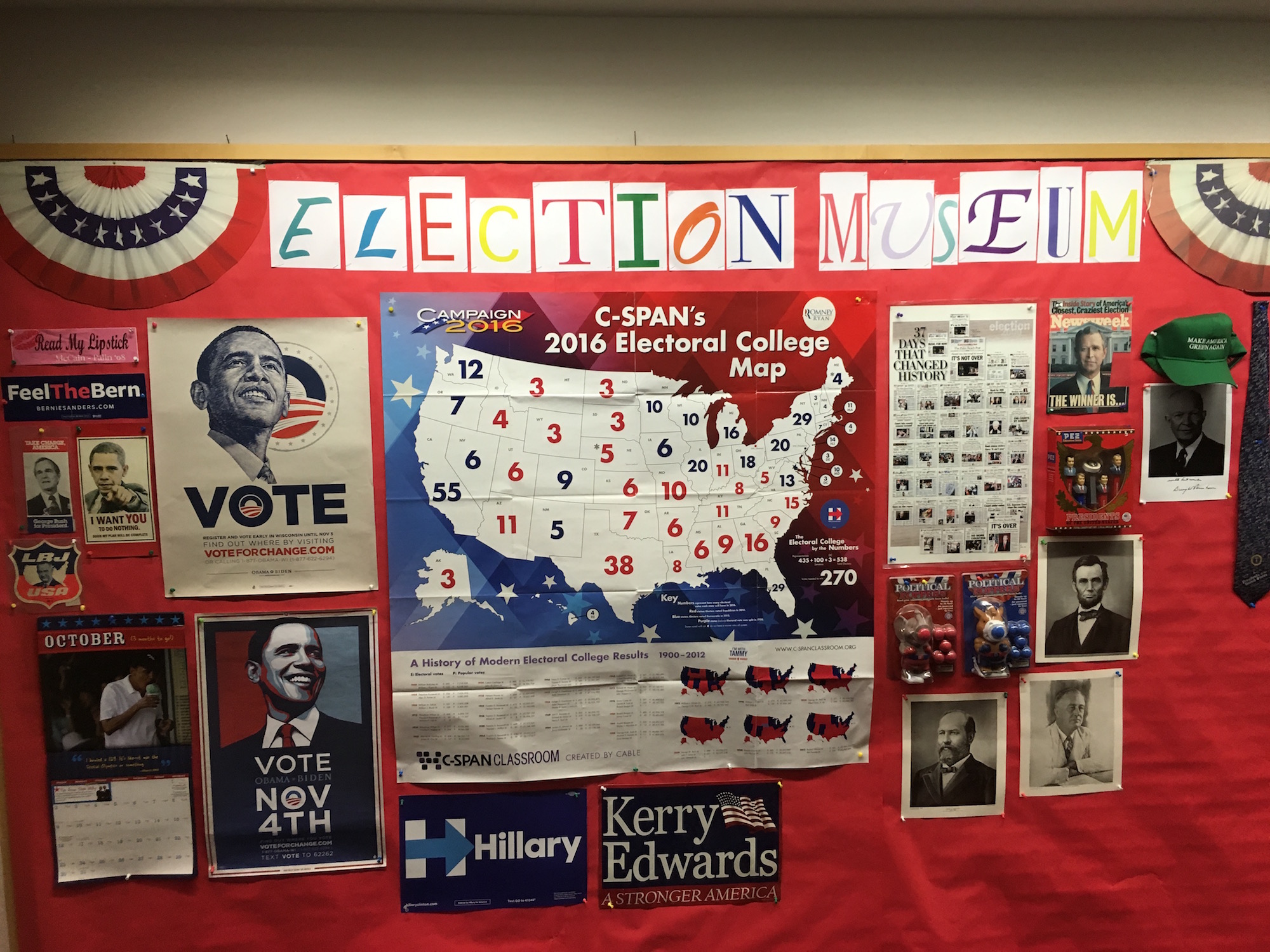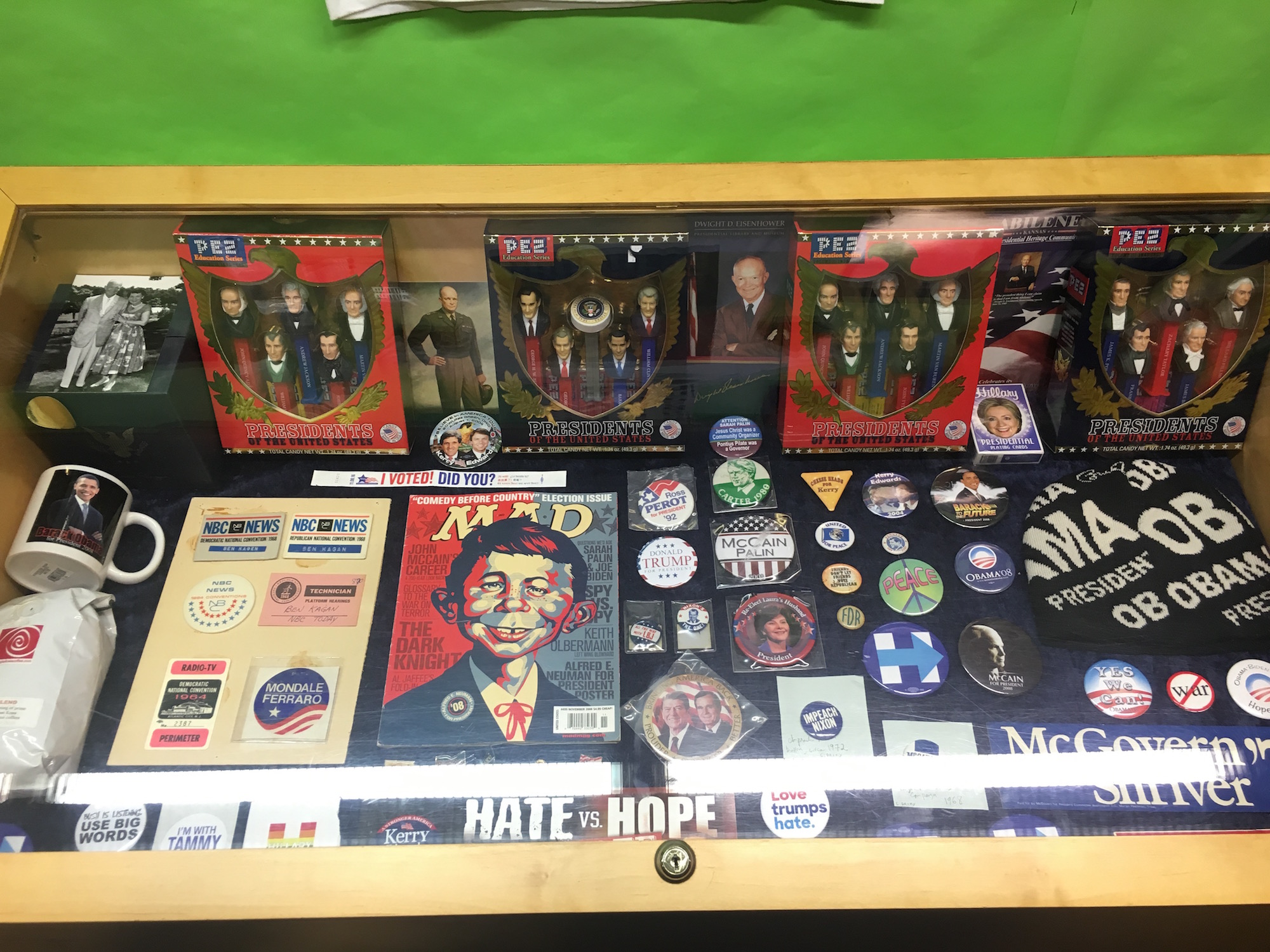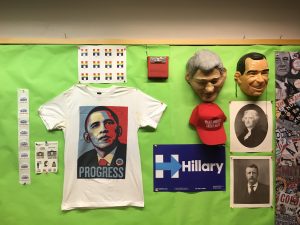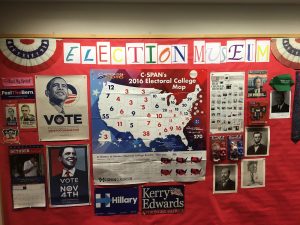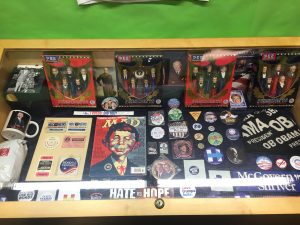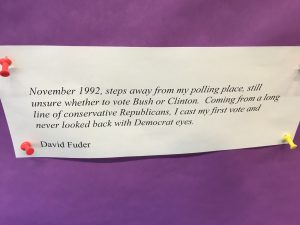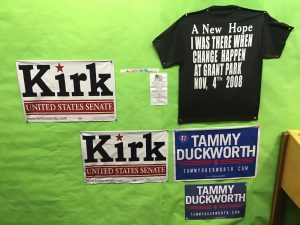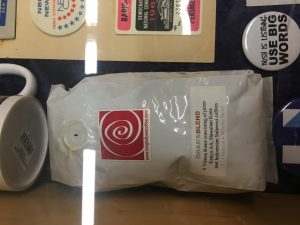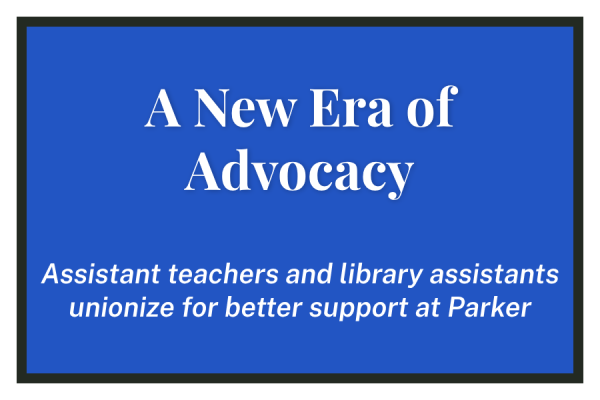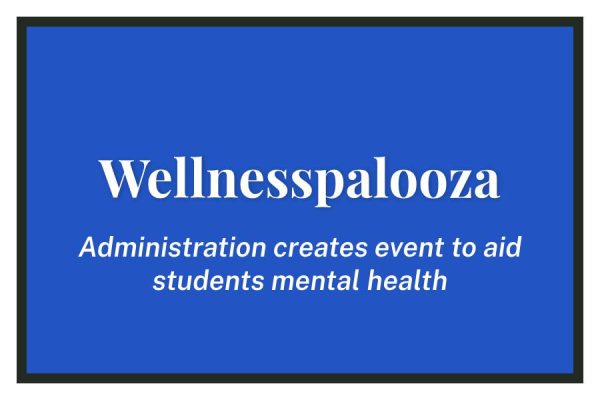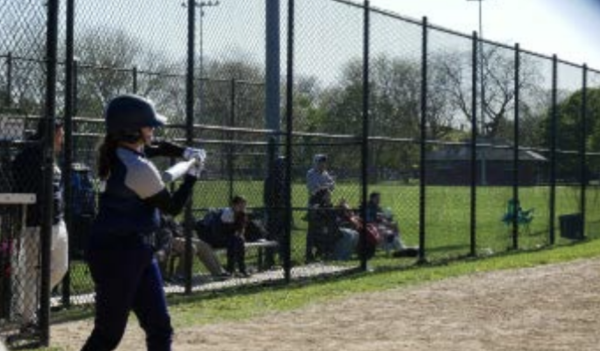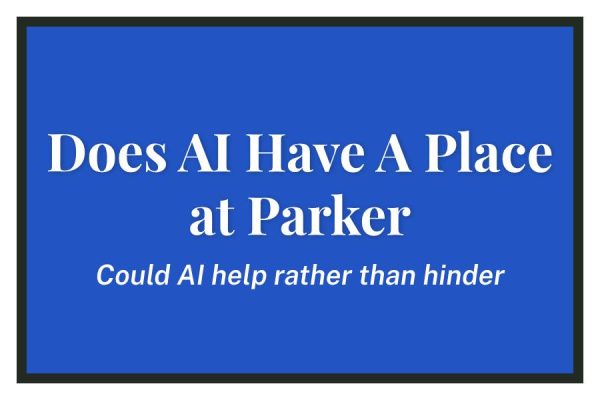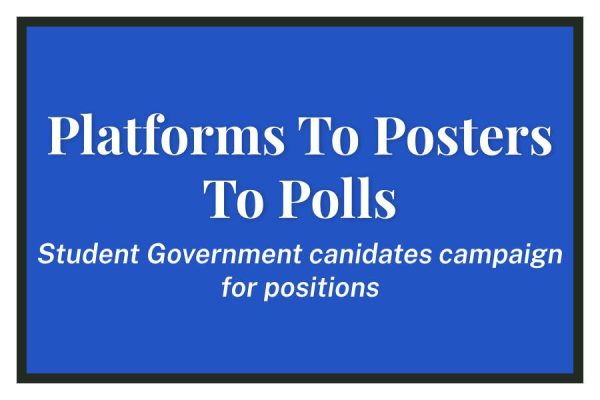Return of the Elections Museum
Back After One Term Hiatus
“November 1991, steps away from my polling place, still unsure whether to vote Bush or Clinton,” eighth Grade English teacher David Fuder’s election reflection posted in an elections exhibit on the second floor read. “Coming from a long line of conservative Republicans, I cast my first vote and never looked back with Democratic eyes.”
Like Fuder, a number of other members of the Lower, Intermediate, Middle, and Upper school faculty and staff submitted elections reflections to be included in this year’s Elections Museum.
The reflections were 10 to 15 words in which the writer shared his or her first experience with an election or with voting. Seventh Grade History Teacher and Co-Chair of the History department Anthony Shaker said, “The election reflection is a way for people to reflect on the first time they voted or a powerful time that they voted and reflect on their first memory of an election.”
Upper School History teacher and Co-Chair of the History department Andrew Bigelow agrees. Bigelow said, “It’s kind of fun to look at various faculty and staff members and their earliest memory of being part of an election.”
The Election Museum itself was located on the north hallway wall, just outside of the auditorium. Stapled and hung on the walls were election reflections as well as memorabilia from past elections spanning from the 1960s to the recent presidential election.
On the wall were objects such as pins, signs in support of a candidate, shirts, and stickers. The display case just below the wall housed more valuable pieces. Items in the display case included human-like pez dispensers, figurines, playing cards, press passes, and mugs.
The “Elections” course that Bigelow teaches helped in the construction of the museum. “A lot of us worked in campaigns mostly for senators,” junior Noah Jennings said, “so we were able to grab some buttons or yard signs for put up in the museum.”
Along with the help of the rest of the History department, Bigelow and Shaker orchestrated the museum with hopes of exposing the whole school to its wealth of information. This year’s museum was the second of its kind. The first ran during the presidential election between Obama and McCain eight years ago.
The museum eight years ago focused more on teach-ins and workshops and did not include reflections.
“We wanted to bring the museum back, add the election reflection wall, and be able to educate students of all ages,” Shaker said. “This hasn’t been the prettiest election, so we wanted to create some positive buzz to approach the election… I think most people are tuning out because of how ugly the election is getting, and so this is a way to get people more excited about it.”
The majority of the space on the wall and in the display case was filled with memorabilia from democratic candidates and campaigns. Bigelow believes that this can be attributed to the community’s lean to the political left. “Some folks are more politically active than others, but we tend to have a more liberal agenda with our museum just because a lot of people who work and go to school here tend to have a more democratic stance,” Bigelow said. “So I would say that the election museum is a pretty good reflection of the political viewpoints of Parker.”
Bigelow and Shaker also held a competition among Middle and Upper school advisories. The competition asked each advisory to guess which presidential candidate would win the electoral votes in each state. The advisory with the highest number of correctly predicted states will receive pizza for their accomplishment.
